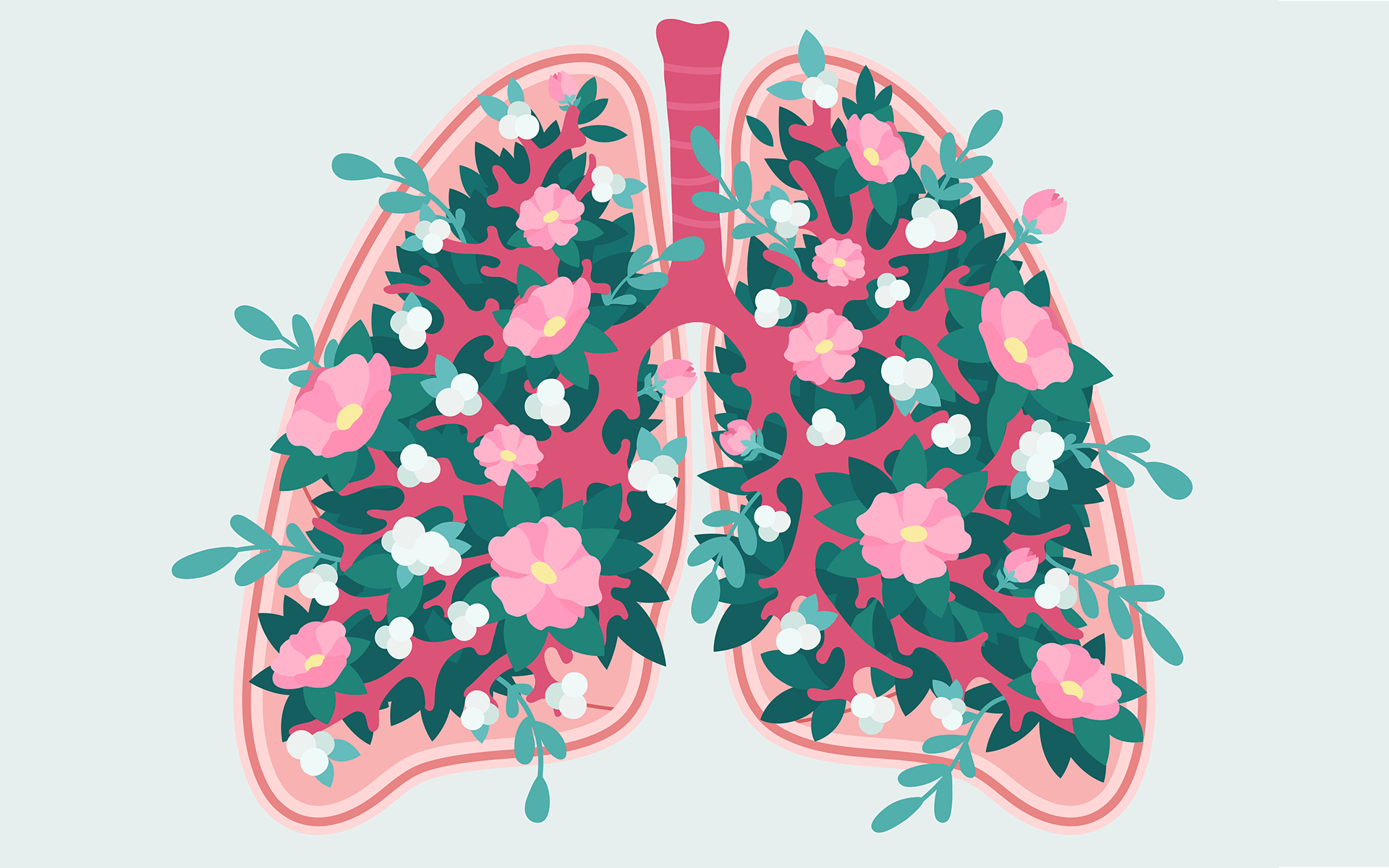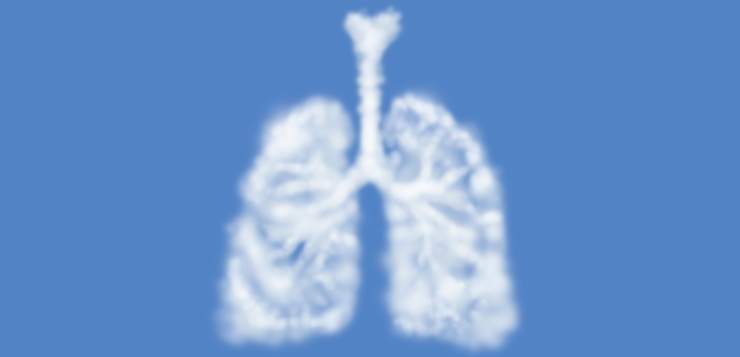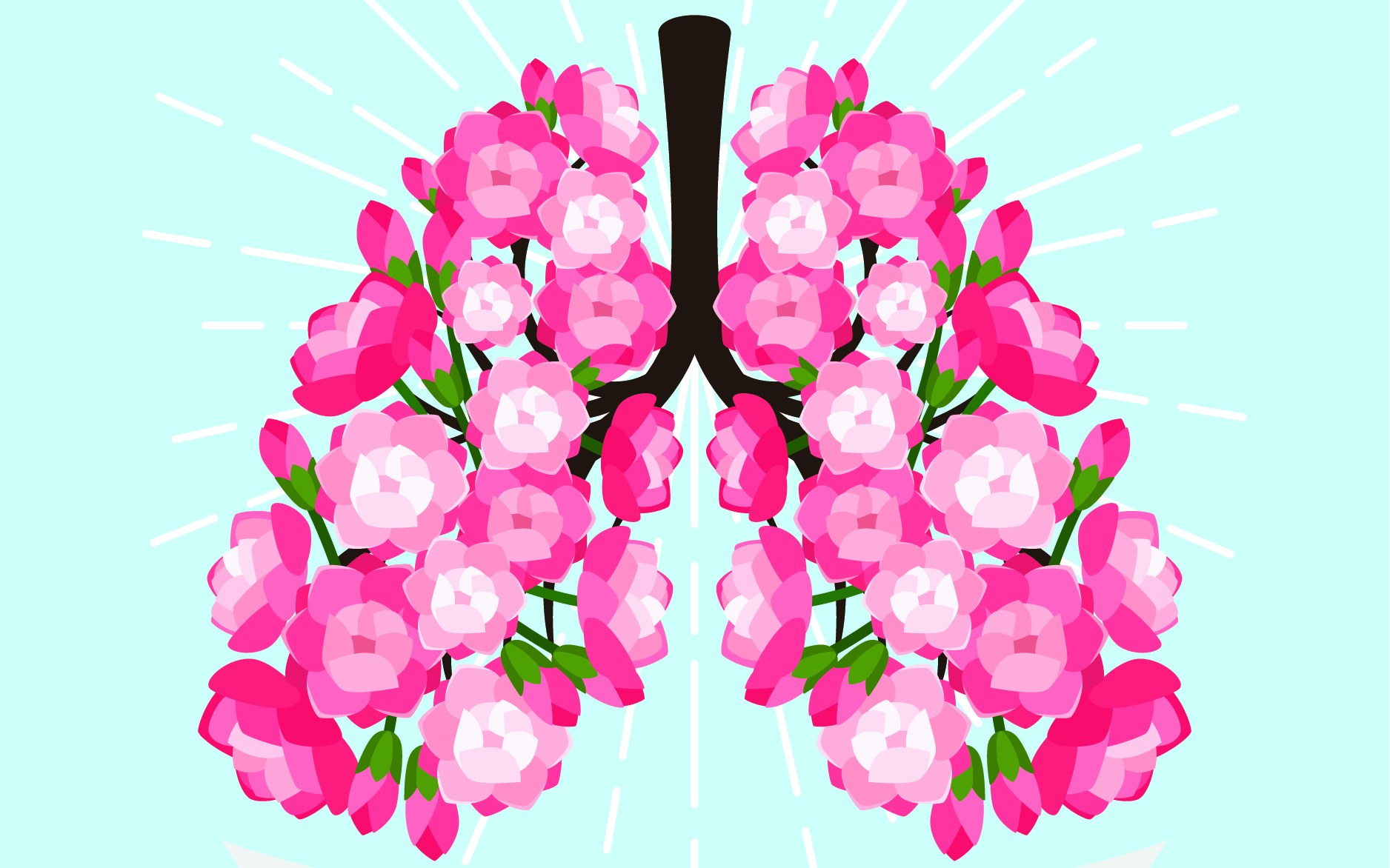It feels, especially lately, that the world is releasing a emotional sigh. A COVID-weary, climate-anxious, war-distressed sigh.
But a sigh is really just an out-breath, an exhale, the companion to breathing in. “When we inhale, it’s a very active process,” says Dr. Ni-Cheng Liang, a pulmonary physician, podcast host, and mindfulness teacher who gets to see the process play out in her students. “The diaphragm actually has to pull itself down and flatten in order for us to invoke an inhaled breath.” The exhalation, on the other hand, is much more passive, and consequently, says Dr. Liang, doesn’t get as much attention. But what’s important, she explains, “is that we can actually control the out-breath and harness our own physiology to help exhale out all of our residual breath.” In other words, only when we deeply exhale will we be able to deeply inhale. That out-breath, that sigh, matters.
A strong outbreath is a chance to connect our thoughts around anxiety or stress or worry and make them real in the breath, with the aim of giving those feelings room to shift, instead of keeping them stuck inside.
An exasperated out breath, for example, may signal that we’re experiencing stress or processing trauma. Jasmine Marie is founder of Black Girls Breathing, which aims to create a safe space for Black women to manage their mental health through breathwork and community. She often includes a strong out-breath, “a forced sigh,” as part of the breathwork she teaches. A sigh is how we communicate to others that something’s off or wrong, she says. It’s a chance for those doing the work to acknowledge their thoughts around anxiety or stress or worry and make them real in the breath with the aim to give those feelings room to shift, instead of keeping them stuck inside—a chance “to release what’s no longer serving us,” she says.
A key part of Black Girls Breathing is addressing trauma, says Marie. “Individual trauma, collective trauma, generational trauma…” Using breathwork to process trauma is like cleaning out our closets. We go in and get rid of a bunch of stuff, and then, the next time we go in we discover there’s still more to get rid of.
“It’s like a constant reminder that this is a process,” she says. “Breathwork is a tool to help us navigate the hard things in life.”
Yet, in times of stress or anxiety, our body often does the opposite of what’s helpful. Instead of deep, slow breaths, our breathing quickens, becoming more shallow, which helps short-term when our options are to fight or flee. It’s a response that might have served when there was a literal tiger at our door, but it doesn’t serve us when our stress is caused by an overdue work project or a pandemic or nothing we can exactly put our finger on. What can an exhale teach us about that?
Your Outbreath and Your Brain
James Nestor, a science journalist and author of the book Breath, says that breathing is one of those things that most of us (including experts in the science of breathing) don’t really think about until there’s something wrong. “It’s shocking to me that we can prove how breathing affects us either in good ways or bad ways; you can feel it in the first few seconds of breathing in a healthy way, you can see it in studies done of people who have changed their breathing and dramatically improved their health,” he says. And yet…most of us don’t think about it.
Jose L. Herrero-Rubio isn’t most people. A childhood asthma sufferer, and now assistant professor at the Feinstein Institutes for Medical Research, Herrero-Rubio has carefully studied the interactions between physiology and brain functions: what’s happening in our body and our brain, both when we’re breathing mindfully and when we’re stressed. Thanks to his research, we’ve learned that there is much communication between the brain stem—which is responsible for stuff that keeps us alive, like respiration—and the sub-cortical areas of the brain, which help with higher-order thinking. When we breathe, explains Dr. Herrero-Rubio, the somatosensory cortex, a brain region that processes sensations of touch, detects that we have inhaled, and tells the brain region associated with movement, the motor cortex, that it’s time to stop inhaling and start exhaling. “They have to be sending each other neural copies,” he explains, “updating each other.”
This relationship between our brain’s movement and touch areas and the communication they send shapes how we breathe and when we inhale and exhale. “People who constantly feel breathless might have abnormal communication between these cortical circuits,” says Dr. Herrero-Rubio. For instance, if the touch region does not update the movement region sufficiently, such as when CO2 levels are rising quickly during exercise, then your rate of respiration won’t increase. Conversely, if the movement region is too sensitive to tiny fluctuations in CO2—such as with asthmatic people or those with chronic anxiety—then it might constantly update its communication, leading to hyperventilation.
Even people with “normal” communication within these cortical circuits can find that, when we’re stressed, the areas of the brain that are much older, more involved in our fight-or-flight response, such as the amygdala, come online. So these two areas that have been communicating quite effectively—the somatosensory, or touch, cortex and the motor, or movement, cortex—are suddenly being interrupted by the amygdala. The result, says Dr. Herrero-Rubio, is “noise.” Or, put another way, it’s as if a panicked person has crashed your super-chill breathing party.
A Mindful Exhale
This is where mindfulness comes in, says Dr. Liang. It allows us to notice when our body is responding automatically to stress and gives us the opportunity to pause and choose our response. In short, we can hack our brains to bypass or shortcut the stress response.
“There are unique connections between the lungs and the vagus nerve…responsible for the para-sympathetic nervous system,” says Dr. Liang, which she describes as the “resting and digesting” nervous system. When we pay attention to our breath, when we take a deeper inhale and an extended exhale, this rest-and-digest system can override our fight-or-flight system, sending the message to parts of the body readying stress defenses that all is, in fact, fine.
She explains, “You can take advantage of your physiology and prolong your exhale…even two to four times longer than the inhale, and you exhale through pursed lips, as if you are blowing out birthday candles. That actually can help you stent open your airways for longer to allow the exhale breath to complete itself in a more comprehensive way.”
It boils down to simple math. If you want to be able to take a larger inhale, then you need to have completely exhaled.
The respiratory pattern of people who’ve been practicing meditation for a long time is “very different” compared to other people, says Jose L. Herrero-Rubio. “The breathing rate is much lower, the exhalation is more pronounced, the inhalation/exhalation ratio is much lower because they spend more time exhaling.”
By using the outbreath to expel what we no longer want, we are then better able to welcome something new.
Breathwork is not a panacea, says Dr. Liang. But regular practice will help us better address stress and anxiety. She points out too that while “mindful breathing can include breathwork and breathwork can include mindfulness,” the two are not identical. “Breathwork refers to voluntary control of the breath, usually to achieve a desired goal such as a decrease in shortness of breath or reduction of anxiety, for instance,” she explains—goals that may involve extending the out-breath. Mindful breathing, on the other hand, “is any type of breathing that you apply mindfulness to, which includes when one is simply noticing breath without trying to change it.” By using our out-breath to expel what we no longer want, as Jasmine Marie puts it, we are then better able to welcome something new.
A sigh, after all, is an out-breath with a story attached to it. By expelling it, we make space for a new one.
READ MORE
A Breathing Meditation to Gently Bring Your Attention Back with Awareness
Renda Dionne Madrigal shares a breathing meditation to cultivate stillness so you can gain more clarity and strengthen your inner compass.
Read More
Your Breath is Your Brain’s Remote Control
A study has found evidence to show that there is actually a direct link between nasal breathing and our cognitive functions.
Read More
Why Mindfulness Meditation Begins with the Breath
We can learn a lot from the natural rhythm, pace, and un-fussiness of how the breath continues its work, without making a big deal out of it.
Read More









